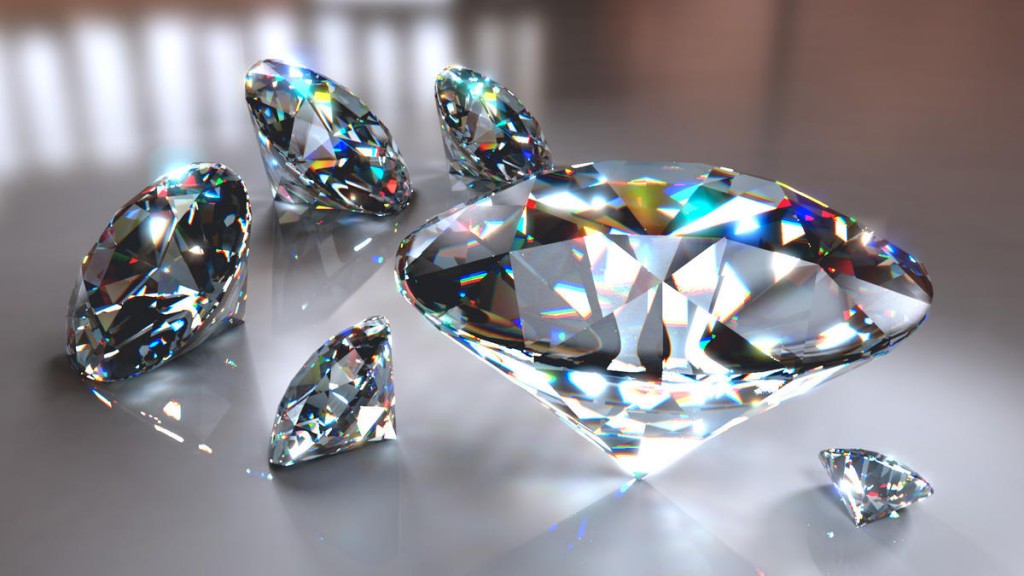SHOP PAY PAYMENT PLANS AVAILABLE. FREE SHIPPING ON YOUR ORDER TODAY!
April Is Showered In Diamonds
When we see beautiful diamonds in the jewelry case, we have to remember that they didn't start out looking sparkly and clean. A diamond is made up of carbon and is initially formed under extreme pressure and heat between 100 and 250 miles beneath the surface of the earth in what we call the lithosphere. This pressure then pushes the unpolished diamonds toward the surface. Once it is mined, it is cleaned and polished into what you probably picture when you think of a beautiful diamond, one that is suited for a ring or earrings.
The History of the Diamond
The earliest known diamonds were formed over 900 million years ago, but the earliest recorded stones were found in India during the fourth century BC. They were commonly traded between India and China, and then gradually made their way out to Western Europe. These stones were valuable during this time because of their ability to make marks in metal and to refract the light. In addition to being worn for decoration, they were believed to keep evil spirits away and to protect warriors during battle. During the Dark Ages, they were also ingested to cure sickness and to heal different ailments in the body. By the mid 1400's, people started wearing diamonds more as fashion accessories, especially the more elite Europeans.
During the 1700s, Brazil became an important mining source in the industry. In the 1800s, a new source of diamonds was found along the Orange River in South Africa. This caused thousands of prospective diamond miners to flood the area in search of diamonds. At the same time, the distribution of wealth was changing, and the upper classes were shrinking. Because of the increase in supply and the decline of the upper classes, the demand for the beautiful stones went down, decreasing their value. This also led to the popularity of other stones, such as sapphires, rubies, and emeralds. The higher-class people started using these colored gemstones for engagement rings and for other important jewelry pieces.
Diamond Mining
By the early 1900s, diamond mining had gone from producing less than one million carats to producing over 3 million within 50 years. By the late 1900s, that number rose to over 100 million carats produced annually. During the 1970s, most of the diamonds were coming out of South Africa, The Democratic Republic of Congo, and what we now refer to as Russia. In the 1980s, Botswana became an important source, as well.
Today, the biggest supplier of mined diamonds is Russia. Russia is followed closely by Botswana, the Democratic Republic of Congo, Australia, and South Africa. Other diamond-mining countries include Canada/North America, Angola, Namibia, and Ghana. The least important diamond-mining country today is Brazil.
Colored Diamonds
Although a perfect diamond is colorless, there are some colored diamonds that are just as beautiful and valuable as a colorless stone. If there are any chemical impurities or defects, the diamond may appear to be a color somewhere between clear and black. Diamonds can come in almost any color: white, yellow, red, pink, purple, green, orange, blue, gray, brown, or black. The impurities can make the stone more or less valuable.
Infamous Diamonds
There are a few diamonds in existence that are treasured for their rare size and beauty. The Hope Diamond is a 45.5 carat blue colored diamond. Its blue hue is a result of boron in its chemical makeup. Initially found in the 1600s, it now sits in Washington, D.C., at the Smithsonian Institution's Natural History Museum. The Centenary Diamond is over 273 carats and was not discovered until 1986. It is currently the world's most flawless and largest diamond and has the most modern cut known to date. The Great Star of Africa is a 530 carat diamond that is the largest cut stone in the world. It is pear shaped and has 74 facets. It is currently set in the Royal Scepter and is kept with the Crown Jewels in the Tower of London. It was discovered in the year 1095 in South Africa.


